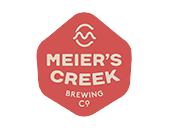Let’s face it: Most winemakers don’t start their own business because they love to crunch numbers. And yet, winery inventory cost accounting is still a crucial piece of the puzzle when looking to optimize your winemaking business operations.
We’re in the midst of an uncertain environment, with material and ingredient costs increasing at levels with which price increases for your products can’t necessarily keep pace. In that environment, being accountable for your costs, and increasing the efficiencies within your ability to manage those costs, has become more important than ever.
It’s impossible to run a business, including a winery, without at least basic financial standards and principles in place. But beyond that, you might need help to optimize your winery inventory cost accounting practices. These 7 tips can help you get started.
1. Don’t Fall Behind in Your Winery Inventory Cost Accounting
At its core, wine cost accounting is the process of recording, assigning, and analyzing the costs needed to produce your wine. That process, in turn, can only be accurate if the recording and assigning part of the equation happens as close to real-time as possible.
In other words, it’s crucial to regularly update the costs needed to produce your wine. Whether you use automatic or manual cost accounting processes (more on that later), you cannot rely on outdated information as you assign the cost of goods sold (COGS), cost of goods produced (COGP), and other important variables.
2. Keep a Close Eye on Grape Costs
Naturally, the profitability of your winery will depend in part on its most important ingredient: the grapes needed to produce the wine. That price, in turn, can fluctuate widely. Variables from the grape type of demand all influence the price per tonnage, which increased by more than 7% in 2022.
Related: Winery Inventory Management: How to Get Started
However, more variables enter the equation as well. Prices change based on seasonality and the yield of a season compared to the year prior. The better you can keep track of these variables, the more efficient your winery inventory cost accounting can become, helping you more accurately analyze and plan your production for optimum profit margin.
3. Implement Standardized Valuation Methods
At its best, cost accounting allows you to optimize your price point and operations based on the expected cost of producing the wine you sell. To get there, you’ll need to find a way to both estimate and benchmark your costs. The more you can standardize that process, the more effective your cost accounting can become.
For example, consider implementing the standard costing variance analysis in your cost accounting. Within that analysis, you set a standard or expected cost for producing a specific amount of wine, then periodically check how much the same amount of wine actually costs to produce. The variance between standard and actual costs provides insights into how you are valuing both individual materials and the overall costs of producing your product.
4. Separate Your Direct and Indirect Costs
Any winery inventory cost accounting effort has to include specific consideration of both direct and indirect costs:
- Direct costs are the costs directly associated with producing the wine. That might include grape and other ingredient costs, bottling costs, and labor costs specifically related to wine production.
- Indirect costs are costs more generally associated with running your winery. They might include office expenses, building leases, or labor costs for front-end staff selling the wine.
Especially for those new to cost accounting, it can be tempting to focus only on direct costs. But that ignores a potentially significant piece of the equation and ultimately provides an incomplete picture of your expenses and profitability. Separating the two builds full transparency for your winery business costs and ensures you’re not missing any variables in your accounting calculations.
5. Appropriately Allocate Your Overhead Costs
Speaking of indirect costs: overhead costs will likely make up a significant piece of your indirect costs. Simply put, they are the indirect costs that are ongoing and essential to keep your business running, like building lease or rental costs, equipment maintenance and upkeep, utility bills, and insurance payments.
Though you need to account for them, there is no exact science for allocating overheads within your wine inventory cost accounting effort. The most appropriate approach is a simple formula: divide your average overheads per month by the number of barrels of wine you produce per month to estimate the overheads costs per barrel. It’s only an estimate, but can still help you gain a fuller picture of your true business costs for accounting purposes.
6. Standardize Your Cost Accounting Processes
The above tips alone show just how quickly your winery’s cost accounting processes can become complex. The key to success, then, is standardizing these processes where possible to minimize the effort and manual calculations you have to take each month and reporting period.
That starts with following the Generally Accepted Accounting Principles (GAAP). Doing so helps to keep the full picture of your winery inventory cost accounting and improves your chances of compliance. From there, standardize the ways in which you calculate variables like overhead costs and COGS to ensure that you calculate it the same every time you need to update it.
7. Leverage Inventory Management Software
Finally, accurate and comprehensive cost accounting for your winery is impossible (or at least unnecessarily complicated) without the right tools. Those tools, in turn, have to begin with inventory management software at your disposal.
Related: Understanding COGS for Wineries
Winery inventory management software can help you keep track of your physical inventory counts. But its functionality goes beyond that. Automating your inventory, and the costs associated with your inventory, helps you reduce manual errors and gain real-time visibility into your expenses. You can even run comprehensive reports that allow you to keep track of many of the nuances mentioned throughout this guide.
Of course, not every inventory management software is created equal. Some solutions you’ll find are dedicated to physical inventory management only, while others are designed to be more comprehensive in all aspects of your winery management—including cost accounting. Those comprehensive solutions are especially helpful as you look to improve and optimize your expense tracking.
Take the Steps You Need to Improve Your Wine Inventory Cost Accounting
Running a successful winery is impossible without producing great wine. But even the best winemakers need to crunch the numbers when it comes to their expenses to ensure they remain profitable and in compliance with all relevant TTB reporting requirements.
That process is never easy. But with the right approach, you can streamline your wine inventory cost accounting, and even turn it into an asset for your business. A better understanding of costs, after all, allows you to improve your purchasing, price setting, and business planning to make better decisions and grow your winery over time.
From keeping a close eye on costs all the way to standardizing your processes, a more strategic approach can go a long way to success. The right software can help, too. Book a demo with Ekos today to see how dedicated winery management software can improve all of your operations, including your cost accounting efforts.





